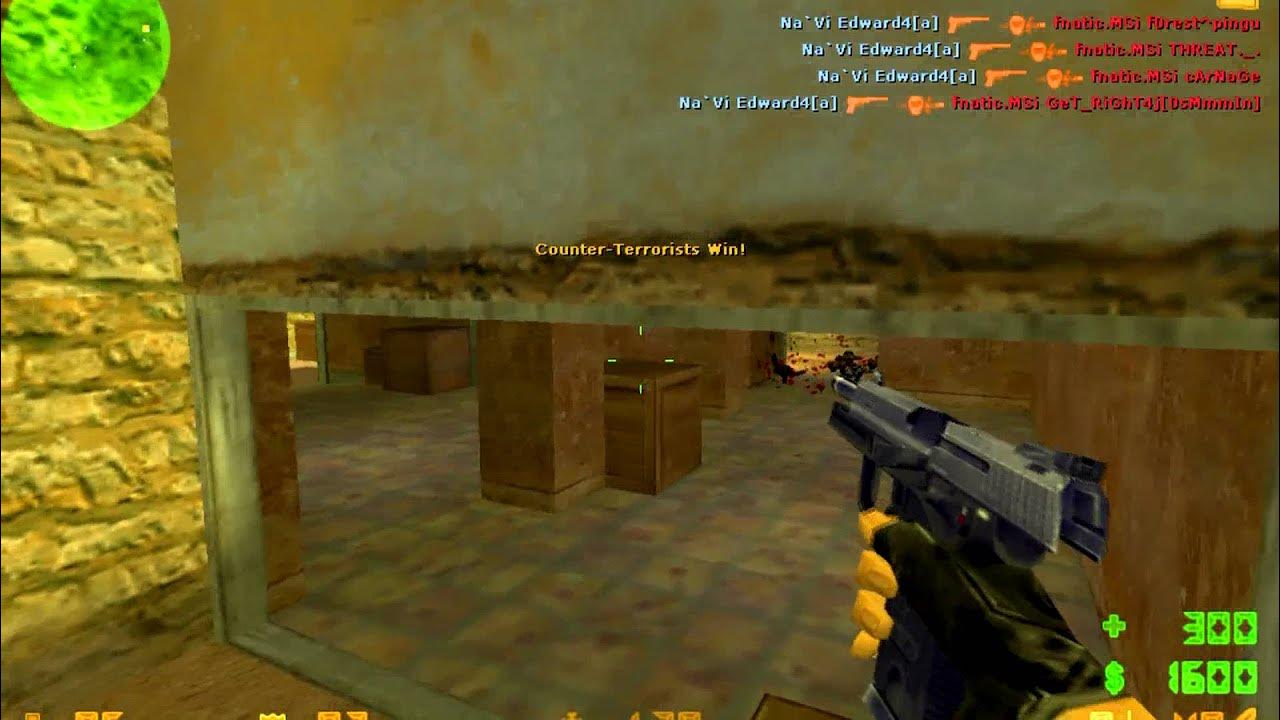The Counter-Strike franchise, a titan in the esports world, has seen numerous iterations over its decades-long tenure. Each version, from the foundational CS 1.6 to the relatively new CS2, has brought distinct changes, sparking continuous debate among its dedicated player base and, perhaps most intensely, among its professional competitors. Recently, Ioann “Edward” Sukhariev, a name synonymous with legendary Counter-Strike play, offered his concise yet profound analysis, weighing in on what each version did best.
Edward`s commentary, shared via the Vodka Team`s Telegram channel, cut straight to the core of what makes each game unique. His verdict:
“Shooting I liked most in 1.6, balance – in CS:GO, and graphics – in CS2.”
The Unforgiving Precision of CS 1.6 Shooting
For many veterans, Edward included, the shooting mechanics of Counter-Strike 1.6 remain unparalleled. It was a raw, unforgiving system that demanded precise control, intricate spray patterns, and an almost intuitive understanding of weapon recoil. There were no complex scopes or advanced movement systems; success hinged purely on individual aim and tactical positioning. This era forged legends, where every bullet counted, and a well-placed headshot was a testament to hours of dedicated practice. The feel of the AK-47, the crisp “one-taps” with a Deagle – these are memories etched into the minds of players who lived through the golden age of competitive Counter-Strike. Some might call it archaic; others, including Edward, would call it perfection, a true test of mechanical skill that current versions strive to emulate, often with mixed results.
CS:GO`s Masterclass in Balance and Competitive Ecosystem
When it comes to game balance, Edward points to CS:GO as the zenith. Launched in 2012, CS:GO built upon its predecessors by introducing a sophisticated economic system, a wider array of weapons, and meticulously designed maps that became synonymous with competitive play. Valve continually tweaked weapon costs, damage models, and utility prices, striving for a dynamic equilibrium where no single strategy or weapon dominated indefinitely. The evolution of smokes, flashes, and molotovs created a complex tactical layer that allowed for diverse team compositions and strategies. This meticulous balancing act facilitated CS:GO`s rise into a global esports phenomenon, attracting millions of players and fostering a robust professional circuit. While it had its share of controversies – the infamous R8 revolver comes to mind – its decade-long reign demonstrated a commendable commitment to fostering a fair and engaging competitive environment, an aspect Edward clearly valued.
CS2: A Visual Feast and a Glimpse into the Future
Perhaps the least contentious point of Edward`s comparison is CS2`s graphical prowess. Built on the Source 2 engine, CS2 undeniably represents a significant visual leap forward for the franchise. The upgraded textures, realistic lighting, and enhanced environmental details are a feast for the eyes. Dynamic smoke grenades that react to bullets and explosions, overhauled maps with stunning fidelity, and more fluid player animations all contribute to a modern aesthetic that aligns with contemporary gaming standards. While the underlying gameplay and particularly the shooting mechanics have been subjects of intense scrutiny and community feedback since its release, the visual overhaul is a welcome update. It signifies Valve`s commitment to evolving the series for a new generation, even if the transition has been, shall we say, a work in progress from a purely competitive perspective. It`s the shiny new car, though some are still wondering if the engine needs a bit more tuning.
A Consensus Among Veterans: The Friberg Perspective
Edward is not alone in his reflections. Adam “friberg” Friberg, another illustrious veteran of the Counter-Strike scene, echoed similar sentiments in his own comparisons between CS:GO and CS2. While acknowledging improvements in graphics, sound design, and the innovative mechanics of smoke grenades, friberg also voiced discontent regarding the shooting experience in CS2. This emerging consensus among seasoned professionals highlights a critical challenge for Valve: maintaining the core competitive integrity and “feel” of Counter-Strike while pushing technological boundaries.
The Enduring Debate: What Makes a “Perfect” CS?
These professional insights underscore an eternal truth about long-running game franchises: perfection is elusive, and subjective. What one player values – be it the raw skill ceiling of an older engine or the visual fidelity of a newer one – another might see as secondary. Edward`s breakdown offers a rare, clear articulation of these distinct qualities. It`s a testament to Counter-Strike`s enduring legacy that each version can be celebrated for different strengths, even as players continue to passionately debate which combination of attributes truly makes for the ultimate competitive experience.
Ultimately, the evolution of Counter-Strike is a continuous narrative, shaped by developer decisions, player feedback, and the unyielding pursuit of that elusive, perfectly balanced, visually stunning, and mechanically precise tactical shooter. Perhaps the true “best” version is not one that exists, but one that continues to evolve.

